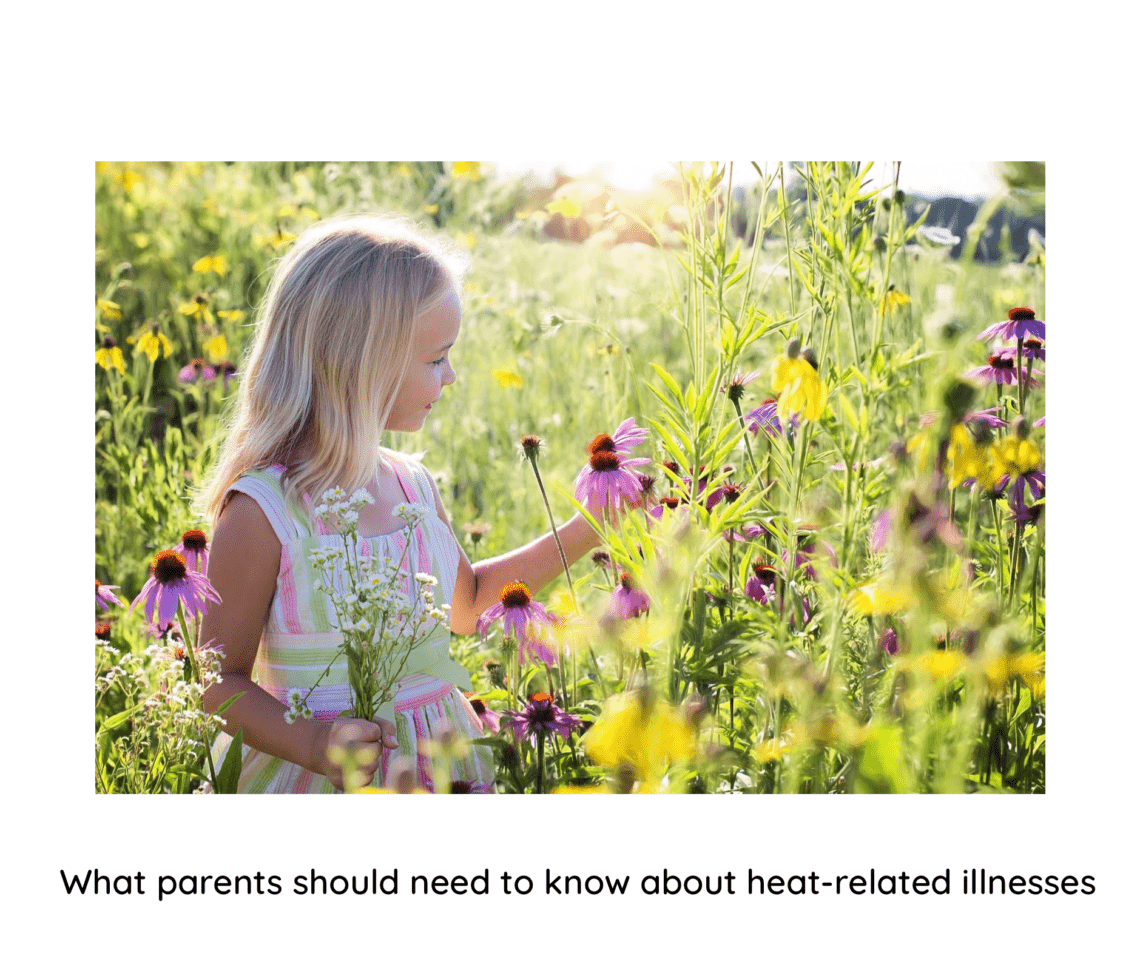
Heat-related illnesses what parents need to know
This is a collaborative post
The weather is changing, and with every season comes a new set of things to enjoy and things to be afraid of. Summertime brings a lot of things to look forward to; there are so many colorful fruits to go around, good days to catch a swim or go out for a ball game. But, summer also brings the most undesirable condition of them all; heat. Everyone’s familiar with the uncomfortable feeling of sweat trickling down your back while stepping into the kitchen or leaving the house for a walk. Health experts at Click Pharmacy also want you to be prepared to cope with any undesirable weather conditions. So, they’ve put together this guide on heat-related illnesses for parents.

Young people and the rising heat
As adults, we find it easier to cope with the heat. We know when it’s too much for us and how we can cool down our bodies. Young people, however, aren’t always as well-equipped in this area. Their bodies are quick to respond to any changes in the atmosphere, but they don’t have a comprehensive understanding of what these changes mean and how to combat them. This is especially true for children under 9 years of age. They’re quick to overheat but don’t understand the symptoms or the cause. As a parent, you need to be hyper-vigilant this season to keep your young ones safe.

What are heat-related illnesses?
When the temperature of the external atmosphere increases quickly, our bodies respond by taking measures like sweating to counter the heat. Our system does this so that our internal temperature can be lower than the environment, and we can cope easily. However, sometimes the heat gets too much, and we either don’t find the chance to cool down, or we don’t realise how much we need to. As a result, our internal temperature rises as fast as the external temperature, and we end up experiencing heat-related illnesses.
What are some common heat-related illnesses?
Heat-related illnesses have been around forever, and in recent years, we have gained a better understanding of them. Global warming increases temperatures every year, and we experience hot weather more frequently and intensely than before. As a result, we’ve seen some of these heat-related illnesses become more common:
- Heat syncope
- Heat cramps
- Heat exhaustion
- Heatstroke
- Heat rash
- Heat syncope
Heat syncope, also referred to as orthostatic dizziness, occurs when someone who isn’t used to the high temperature is exposed to the heat for a long time. A fainting episode characterizes it. When young people don’t tolerate the heat, and they stand outside for too long or keep lying down in the heat without much activity, they often end up fainting. This is because the heat constricts the blood flow to the brain. The body has a hard time matching the requirements of the weather. As a result, young people feel dizzy and eventually become unconscious.
Heat cramps
Heat cramps are extremely common in young people who don’t drink enough water or take up the appropriate salts in the summer. When their body doesn’t have enough nutrients and water, they start feeling tightness in their muscles, often resulting in cramps or spasms in the legs. Heat cramps are not that dangerous, but they can be quite painful for children. Therefore, it’s best to make sure your child is hydrated for the season.
Heat exhaustion
Heat exhaustion also results when your body doesn’t have the necessary water and salts to fight the heat. It can start withyour child feeling thirsty and sweaty, developing a severe headache, feeling dizzy, or even experiencing nausea. Heat exhaustion is a serious concern, and you should take off your child’s excess clothing and give their body a chance to cool down when dealing with it.
Heatstroke
Perhaps the most dangerous of them all is heatstroke. Heatstroke occurs when your body temperature rises, and your nervous system can’t cope with the changes. Usually, we sweat to let out the heat, but your sweating mechanism doesn’t help when a heat stroke occurs. As a result, your temperature keeps climbing above normal. Heat strokes can be deadly for children. They can cause fainting, loss of consciousness, or even seizures. In some cases, if a heat stroke is not treated immediately, it may be fatal.
How can you prevent heat-related illnesses?
The key to preventing heat-related illnesses is building a better tolerance to the weather. This is known as heat acclimatization. It entails helping your child ease into the season by gradually increasing their physical activity and exposure to the sun 10-14 days in advance. This way, when the worst heat strikes, their bodies will be able to cope with it.

Of course, that is not enough. Hydrating is the key to successfully surviving summer. You should make sure your child receives the right amount of water and salts suited to their age and size. If you’re careful about their transition to the new weather and water intake, you’ll be good to go for the season.



